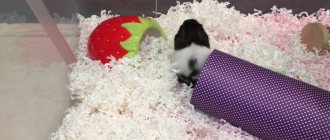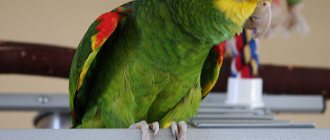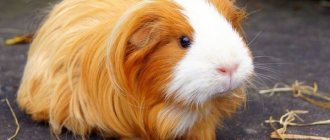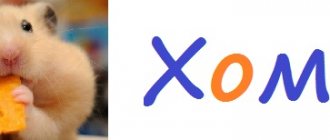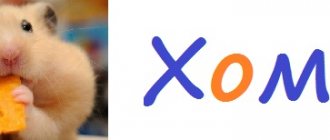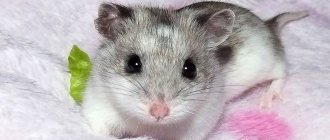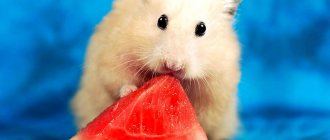Whatever the breed of the hamster, for its full life the toilet in the cage must be fresh. However, this does not mean that you need to use improvised materials such as paper, hay or sawdust as filler. Modern litters are developed under the supervision of leading veterinarians, so they cannot harm the hamster. They can be used as a full-fledged toilet, or they can be placed under the pet’s usual layer of hay. Fillers have many functions. They not only perfectly absorb liquid and unpleasant odors, but also simplify cleaning the cage, and also make the pet’s living environment rich.
The best representatives of fillers for small pets are presented in the rating. Here you will find products of excellent quality that have a lot of positive reviews. They are absolutely safe for rodents. The products have a budget price, and at the same time they make cell care easier. The main task of the owners is the correct choice of filler. In order to try a new product, it is recommended to purchase a small sample quantity. This way you can understand whether it is suitable for your pet.
How to choose a composition for a rodent cage
When the bedding is chosen well, the pet feels comfortable because its fur is dry and clean. Often, paper, hay or fine sand are used to fill the cages of small pets such as rats, hamsters or guinea pigs. The paper version is bad because it practically does not absorb moisture and unpleasant odors. Sand gets dirty quickly, so it needs to be changed regularly. Rodents love hay not only as a warm bed, but also for lunch.
However, there are modern and no less effective fillers of different types:
- Wood pellets do an excellent job of eliminating bad odors and moisture, and are also of natural origin. This option of fillers is popular. There are different sizes of granules; to choose, you need to look at the size of your pet. This composition is suitable for chinchillas, hamsters and rabbits.
- Wood sawdust is also a natural filler. They are easy to dispose of by flushing them down the toilet. They are great for small pet rodents such as dwarf hamsters. However, this option has disadvantages. Sawdust often scatters around the cage and gets stuck in the pet's fur. They do not have the highest efficiency in absorbing moisture and odors.
- Both owners and rodents like the cellulose version. It does not cause irritation and does not stick to the fur. But it can easily scatter around the room, is ineffective in eliminating unpleasant odors, and is rarely found on store shelves.
- The corn composition is suitable for everyone, as it perfectly absorbs moisture and bad odors and is safe for pets. It is ideal for rats, hamsters and mice. However, it has a high price and is rarely found on sale.
The pet's preferences also play a significant role. For example, chinchillas love to take baths in dry sand. Sawdust is also suitable for them. Guinea pigs also like soft wood sawdust, but larger ones. The main thing is that the composition is natural and does not cause an allergic reaction. An important requirement is high absorbency. Cage bedding consisting of cotton wool or pieces of paper is undesirable, as it can cause harm to the animal.
Why does a hamster bury itself in sawdust?
A hamster is a burrowing animal, and the fact that it digs up litter is in the order of things. In nature, hamsters are considered skilled builders of complex multi-level passages and burrows. Digging in the litter indicates the animal is in a good mood and maintaining its skills. Perhaps the house is too small for him and the hamster prepares a cozy hole for himself in this way. In addition, digging serves as a preventive measure against parasites and for cleaning the fur coat. In an unadapted pet, digging may indicate a desire to hide. In any case, digging is a sign of normal hamster behavior.
It is also natural for the pet to bury itself in the litter. The dry and light filler serves as an excellent insulation for a frozen animal. The owner should move the cage to a dry, warm place without drafts.
Filling the cage is an important part for the good appearance and internal condition of the pet. The question is, which filler is best for hamsters? Most owners and veterinarians answer that it is corn. Although it is possible to please the rodent, you will need to try several types of litter. But is it worth it to keep the hamster healthy?
Source
Hay
A good option for filling a dzhungarika's cage is hay. You can purchase it at a pet store or make it yourself. Rodents like bedding because it is very similar to their natural habitat. However, when purchasing, you should study the composition and take into account the size of the rodent. the cover should not be too hard or dusty. Rodents love to make small nests out of hay and also feast on dry grass.
Vitakraft VITA VERDE meadow with dandelion flowers 0.5 kg
The product contains a large amount of fiber. The hay consists of meadow grasses, dandelion flowers and timothy. In addition, this hay contains very small amounts of calcium. Therefore, this product is considered not only tasty, but also healthy for rodents and other rodents. Hay normalizes the functioning of the digestive system and prevents abrasion of the incisors.
Also in the composition you can find all the minerals, vitamins, useful micro- and macroelements necessary for the development of your pet. Hay helps improve immunity. It consists of specially collected herbs that are gently dried. Therefore, the rodent’s nutrition is balanced and healthy.
However, the main function of hay is to absorb odors and liquids. Characterized by economical consumption.
Vitakraft VITA VERDE meadow with dandelion flowers 0.5 kg
Advantages:
- the hay is perfectly compacted;
- has a pleasant herbal aroma;
- no fragrance;
- natural composition;
- tight packaging;
- optimal price/quality ratio;
- It is used sparingly.
Flaws:
- dust is occasionally encountered;
- Not too much variety of herbs.
My beast is meadow hay
This formulation of natural herbs creates a natural habitat for pet rodents. Unfortunately, it does not absorb moisture and odor as well as other types of litter. But hay allows the rodent to feel comfortable, build nests in the litter and feast on delicious herbs. Pet owners praise this product and leave positive reviews about it.
When purchasing, you should pay attention to the presence of dust. Due to numerous transportations, the bag of hay is subjected to shaking and dust is formed. If its quantity exceeds half the package, it is better to refuse the purchase. However, there are breeds that prefer hay with a large percentage of dust, for example, Dzungarians.
One package contains 20 liters of high-quality meadow hay. This volume lasts a long time. When you open the package, you can smell the smell of fresh grass, because the collection and drying is carried out in accordance with all the rules. This is a plus not only for the rodent itself, but also for its owners: now a pleasant aroma will prevail in the room. The composition does not include herbs and flowers harmful to the pet, as well as thorny stems that can injure the hamster. This material cannot be flushed down the toilet, since hay does not dissolve in water.
My beast is meadow hay
Advantages:
- profitable price;
- pleasant aroma;
- economical packaging;
- excellent composition;
- no fragrance;
- well compressed;
- tight package;
- does not cause an allergic reaction;
- natural product;
- creates a comfortable environment.
Flaws:
- the volume may be less than stated on the package;
- ineffective in absorbing moisture;
- Not suitable for all rodents.
Newspaper and paper
Paper is used as bedding, but not newspaper. This is because the hamster tries to chew everything, and the paint is very harmful. The sharp edges of the newspaper will injure the rodent during the process of creating a home. Bedding made of newspapers or hard paper quickly becomes wet and takes a long time to dry. The hamster will have to live in dampness, which is why the fur will quickly become dirty and change color.
You can use napkins as filler, but without designs, smells, etc. This is a good substitute for wood fillers if the rodent is allergic to it. The hamster will also like napkins and paper, as they are excellent building materials. The pet tears up the pieces of paper and makes a kind of nest for itself.
We invite you to familiarize yourself with the relationship between the ages of cats and humans - how old is a cat by human standards?
You can also give hamsters toilet paper. They use it as a bed. So you can use soft paper without paint or odors.
Woody
The wood type is compressed sawdust. It is slightly more expensive than regular sawdust, but it pays off with its properties. It copes better with moisture and bad odors, so it does not need to be changed often. Unlike sawdust, it does not stick to rodent fur. Easy to find at a pet store at a budget price.
Sawdust
Sawdust is classified as a universal type of filler. They can easily be found on the shelves of pet stores at an affordable price. They perfectly absorb moisture and eliminate unpleasant odors. It is enough to change them every 3 days. However, this option also has disadvantages. They stick to the hamster's fur, gradually turning into tangles. Some pets may develop an allergy to wood dust.
Sawdust filler
Advantages:
- affordable price;
- popularity;
- rodents love to dig in sawdust;
- easy to find.
Flaws:
- can cause allergies;
- accumulate in wool.
Linen
For hamsters, linen material is also perfect for bedding in a cat cage, since it is intended for pets with sensitive skin on their paws. It is hypoallergenic, does not generate dust, and does not spill outside the cell. The flax composition is an absolutely natural, biodegradable product. It has excellent absorbency and very economical consumption.
flax filler
Advantages:
- smells good;
- biodegradable product, completely natural;
- economical consumption;
- hypoallergenic;
- high absorbent characteristics;
- affordable price;
- has antibacterial properties.
Flaws:
- not found.
Fiory Woody 14 l
Perfect for decorative rabbits, guinea pigs and other rodents. It is recommended to use it only as bedding. The composition of the product is exclusively natural, thanks to which the pet’s health only improves. Sawdust is obtained from deciduous trees.
One of the main advantages of the product is economical use. One package is enough to care for the cage for several months. Sawdust retains moisture well and relieves the apartment of unpleasant odors. It is recommended to store in a dark and dry place. Do not allow it to be exposed to sunlight. In this case, it will retain its properties until the end of its use.
Fiory Woody 14 l
Advantages:
- absence of sharp elements, dust and smell of pine needles;
- does not cause an allergic reaction;
- nice smell;
- perfectly absorbs liquids;
- no restrictions on the period of use;
- the sawdust is perfectly compressed;
- no fragrance;
- environmentally friendly composition;
- economical consumption.
Flaws:
- splinters may occur;
- price.
Clean wooden paws for rodents
The composition of granular sawdust is ideal for the hamster's habitat. One package contains 4 liters of small granules. The product perfectly absorbs moisture and unpleasant odors. When liquid gets in, the granules disintegrate into sawdust, but they still do not stick to the paws and fur of the rodent. The composition fully lives up to its name. Owners should take into account the fact that light sawdust can be scattered by active pets.
“Clean paws” are quite successfully combined with hay bedding, as they neutralize its shortcomings. Thanks to the pleasant aroma of pine needles, owners do not have to worry about an unpleasant odor. Sawdust is easy to throw away and can be flushed down the toilet, which makes cleaning the cage much easier. “Clean Paws” are safe for rodents because they do not contain wood chips or elements that can cause allergies. Curious hamsters may chew sawdust, but this will not harm their health. On the contrary, their teeth even improve from chewing natural hard granules.
Clean wooden paws for rodents
Advantages:
- does not stick to wool;
- completely natural composition;
- copes well with moisture and odors;
- relatively budget price.
Flaws:
- cannot be used on small breed rodents.
Price of fillers
If you buy fresh sawdust at a sawmill or any woodworking enterprise, their price will be 100–150 rubles per bag weighing 25 kg.
At the same time, packaged sawdust for animals in stores will cost 3–7 times more, and pressed sawdust will cost 10 or more times more, so it is much more profitable to buy them not in the store, but where they are produced .
For greater clarity, we have compiled a table that includes various fillers and bedding that can be bought in stores or ordered online, as well as information about how much it costs to purchase them in other publicly available places:
| Name or brand | Weight and volume of contents | Short description | Price per package rubles | Price in rubles per kg or l |
| Sawdust | 25 kg/200 l | Regular sawdust, which can be bought at any sawmill or in the nearest carpentry shop | 100-150 | 4–5 rubles per kg or 50–70 kopecks per liter |
| Catsan | 5 l | A mixture of quartz sand, chalk and other minerals | 360 | 72 rubles per liter |
| IMPERIAL CARE | 6 l/6 kg | A mixture of clay with unknown components (not listed on the packaging), as well as the smell of baby powder | 660 | 110 rubles per l/kg |
| Fluffy tail | 3.8 l/3.8 kg | The composition is unknown, it is only stated that it is made from “natural ingredients” | 265 | 70 rubles per l/kg |
| Green tea | 4.5 l/1.5 kg | Pressed cedar granules with the addition of green tea leaves | 469 | 310 rubles per kg or 104 rubles per liter |
| Barsik | 4.5 kg/ 4.5 l | Pounded clay | 100 | 22 rubles per l/kg |
| Padovan SANIPET | 10 l /2.5 kg | Dried and crushed corn cobs with lemon flavor (flavor composition unknown), suitable for feeding to any birds and animals | 550 | 55 rubles per liter or 220 rubles per kg |
| FIORY Woody | 14 l/3 kg | Regular sawdust in polyethylene packaging, suitable for any animals and birds | 206 | 14 rubles per liter or 70 rubles per kg |
Cellulose
Paper cage bedding material is perfect for use as bedding for a hamster's cage, especially in cases where the pet cannot tolerate wood dust. This filler is absolutely safe, although it does not retain moisture and unpleasant odors very well. But paper bedding material almost never appears in pet stores. But each owner can easily make the composition himself using scraps of soft paper.
Carefresh Natural 14 l
Made from natural raw materials. Excellently absorbs moisture and retains unpleasant odors. The great advantage of the product is its ease of disposal. To dispose of used cage bedding material, you can simply flush it down the toilet as the product is biodegradable.
Carefresh Natural contains no pine or cedar resins and is completely dust-free. In this regard, the composition is completely safe for the hamster, ensuring that its habitat is close to natural. Carefresh Natural is in great demand among hamster owners.
Carefresh Natural 14 l filler
Advantages:
- contains no essential oils;
- masks odors much better than woody ones;
- no dust;
- harmless to animals and people;
- completely natural;
- does not conduct static electricity;
- does not cause irritation or allergies;
- durable packaging;
- economically used;
- biodegradable product;
- does not stick to hands.
Flaws:
- high price.
Carefresh Colors Confetti
A cellulose product consisting of soft, multi-colored fibers will delight pets and entertain owners. It combines bright bedding and material for building a rodent nest. The hamster happily digs a hole in it or drags bedding material into the house and makes a bed. Carefresh Colors Confetti is completely harmless, does not contain any resins or dust, as well as other ingredients harmful to hamsters. Suitable for even the pickiest or most sensitive hamsters as it is hypoallergenic. Biodegradable material can be easily and safely flushed down the toilet.
The package contains 10 liters of multi-colored filler, which has excellent characteristics: each colored piece absorbs liquids three times its own weight and masks odors well. There is no need to be afraid that the hamster may be poisoned or stained, since the paint on the filler does not come off when wet. Consumers praise the product and note in reviews that it looks smart and does its job well.
Carefresh Colors Confetti filler
Advantages:
- hypoallergenic;
- absolutely harmless;
- affordable price;
- environmental friendliness.
Flaws:
- difficult to find in stores;
- Compared to wood fillers, it retains moisture and odors worse.
Alternative flooring options
What to do if the pet has already arrived at its permanent location, but the cage has not yet been equipped? For a temporary device, clean and soft paper napkins, without multi-colored patterns or fragrances, are suitable.
The animal will happily make a nest for itself to sleep in. But napkins have one significant drawback - the inability to retain urine and an unpleasant odor. For the comfort of the animal, you will have to clean the home often.
In addition to napkins, the hamster can be given non-scented toilet paper and paper towels that have a soft texture for nest building . It is not advisable to use drawing paper or notebook sheets. Hard edges can easily injure your pet.
You cannot use torn sheets of newspaper as bedding. A large amount of impurities in printing ink, when evaporated, can cause significant harm to the health of a pet.
Corn
Corn cage bedding material has proven to be the best and most environmentally friendly product available for rodents. It is made from the core of a corn cob and is completely harmless to a hamster, even if he tries it on his teeth. Hypoallergenic, does not scratch sensitive skin in the area of the cheek pouches. Excellent handling of moisture and odor. The small fraction of corn filler is very popular with hamsters, who dig into it with pleasure. It lasts approximately 9-10 days.
Fiory Maislitter 5 l
Composition suitable for hamsters, guinea pigs, rabbits and other rodents. Can even be used on cats and ferrets. The main advantage of the filler is its environmental friendliness, since the product is made from real corn. The soft and dry bedding created by cage bedding material is liked by pets and has a beneficial effect on their health.
The absorbent components included in the Fiory Maislitter corn filler effectively block unpleasant odors. The product is absolutely safe for the health of the hamster: even if he accidentally eats a little filler, this will not affect the health of the pet. It is advisable to store in a dark, dry place. If storage conditions are met, the shelf life of the product is quite long.
Fiory Maislitter 5 l
Advantages:
- no fragrance or unpleasant odor;
- the product does not stick to your hands and is not electrified;
- used segments change color;
- safe to eat;
- hypoallergenic;
- completely natural.
Flaws:
- high product consumption;
- very fine fraction;
- poor moisture absorption;
- the packaging is very inconvenient;
- high price.
Padovan Sanipet Profumato
Padovan Sanipet Profumato is considered the recognized leader of the rating. It is perfect for bedding for a Djungarian or Syrian hamster, as it fulfills its purpose almost perfectly - it eliminates unpleasant odors and perfectly absorbs moisture. The filler fraction is quite fine, but it is not necessary to change it often, since the litter lasts for 7-10 days. Veterinarians agree with rodent owners that this type of filler is absolutely safe for pets and does not cause allergies.
The citrus smell of the litter does not irritate the hamster, and the owner is only glad that the smell from the cage is so pleasant. So Padovan Sanipet Profumato is not only easy to use and hygienic. The product’s ability to absorb moisture and retain unpleasant odor was highly appreciated even by owners of rats, whose odor is much worse than that of a hamster. Does not stick to the hamster's fur and paws, so it has a neater appearance. There is only one drawback of this filler - the high price. 10 liters will cost the hamster owner more than many products for rodents.
Padovan Sanipet Profumato
Advantages:
- hypoallergenic;
- the product is environmentally friendly;
- high absorbency;
- economical consumption: changes every 7-10 days.
Flaws:
- high cost;
- extremely difficult to find in stores;
- natural premium.
comparison table
| Filler | Replacement frequency | Retention of unpleasant odors on a scale of 10 | Safety for pets (1 – very dangerous, 10 – completely safe) |
| Newspaper | several times a day | 1 | 5 |
| White stationery paper | several times a day | 1 | 5 |
| Toilet paper or napkins | daily | 2 | 8 |
| Rags and cotton wool | several times a day | 1 | 2 |
| Sawdust | 3-4 days | 5 | 5 |
| Cellulose | 1-2 days | 4 | 6 |
| Corn | 7-10 days | 10 | 8 |
For cats
Natural cat material that does not contain dyes or additives is also suitable for bedding in a hamster cage. For example, a hamster will be comfortable in a cage with wood filling, which perfectly retains moisture and odors, while silicate or mineral varieties can harm the health of your beloved pets.
Advantages:
- easy to purchase;
- low price;
- good absorbent properties.
Flaws:
- must be completely natural.
Insidious cotton wool
It would be logical to assume that cotton wool made from natural material - cotton - is the safest bedding. What could be better than the softest, warmest and airiest cloud in which your pet will sweetly fall asleep?
Cotton wool can kill a pet. Alas, from a safety point of view, keeping cotton wool in the house exposes your pet to mortal danger. Externally fragile cotton wool has strong enough fibers that a hamster can catch on with its paw and pull blood vessels, which will lead to tissue death and loss of a limb. In addition, although cotton wool absorbs liquid, it does not retain it at all and spreads the smell of urine.
Premium class
Premium Pet Japan Toyota Silica Gel
Rarely found on sale premium silica gel composition of high quality. Due to the high price, it is designed for wealthy owners of rodents and is available in different versions. This is a bulk composition in a 3-liter package or one 45x56 cm plate. The price of both varieties is equally high, which is explained by a long period of use and excellent quality. Among other things, the composition contains antibacterial components that have a positive effect on the health of the Djungarian or Syrian hamster.
Since the composition copes with its tasks perfectly, there is practically no smell from hamsters. If a rodent decides to dine on silica gel, nothing irreparable will happen, since silica gel is completely harmless. Of course, such a situation is unlikely, since the filler contains a component that tastes unpleasant to the hamster. Silica gel has a long service life, so if used correctly, it does not need to be changed within a month. But it’s better not to keep it for so long and change the bedding more often - it’s healthier for the hamster.
Premium Pet Japan Toyota Silica Gel
Advantages:
- high quality;
- There is a component that tastes unpleasant to a hamster.
Flaws:
- not found.
Let's sum it up
Now you know which litter is best for hamsters and you can choose the right option for your pet with good value for money. We hope you have decided what sawdust is needed for hamsters specifically in your case. Theoretically, you can do without the filler, but with it the hamster is warmer, more comfortable, and it is more convenient for the owner to clean the cage. You need to choose pine sawdust with caution; it is acceptable to use pine sawdust, but cedar sawdust is not recommended. You cannot use sawdust from the factory, even from fruit trees, since before production the wood is treated with special compounds against pests.
Beginner hamster breeders are interested in the question of how much filler to lay. It is recommended in one layer, so that the bedding covers the bottom.
Sources:
https://xvostus.com/homyaki/uhod/napolnitel.html https://pets2.me/bok/1398-kakoy-napolnitel-luchshe-dlya-homyakov.html https://homkin.ru/soderjanie/napolnitel- dlya-homyakov.html
Why do pets need bedding?
Cage bedding material, which is made from a variety of raw materials, is used to retain moisture and odors, that is, as a sorbent. Pets come from different species that have different bedding needs. Based on this, the necessary method of using the filler is selected:
- For small cats and dogs, it is normal to relieve themselves in a tray, which is placed somewhere in the far corner. There they can, following their instincts, mask the smell of excrement by burying it. It is the preferences of a particular pet that have a strong influence on the choice of manufacturer and type of litter. The more comfortable the animal feels, the calmer the owner is.
- Small rodents, such as rats, hamsters or guinea pigs, love to constantly rummage through litter and use it for various purposes. The main purpose of the litter is to use it as a sorbent, i.e. it serves as a toilet. In addition, rodents love to chew on bedding, especially if it is made of corn or sawdust. And, naturally, part of the bedding will be used by the hamster to create and arrange a nest.
- For greater comfort, bedding material is even placed in cages with feathered pets. Birds love to sort through the litter, throw it and dig in it. But they spend a little time at the bottom of the cage, mostly sitting on perches. Therefore, the composition is not so important for them compared to hamsters.
Very high demands are placed on filler materials. It should be hypoallergenic, have antiseptic properties and be easy to clean. The price of the filler is an important criterion, since the consumption is very high.
Can I use cat litter?
If there is no special flooring for rodents, you can use litter for the cat family for a short period. The only condition is the use of wood pellets, without dyes and fragrances. When choosing, you need to study the information on the packaging in order to avoid a purchase that could harm your small pet:
- Silicate gel - causes poisoning if eaten, corrodes the skin upon contact. Unpolished edges can cut the paws. Has a bad effect on hair growth.
- Lumpy clay filler is easy to clean, but sticks to the animal’s paws and quickly spreads over the entire surface. The composition includes quartz dust, which is harmful to the health of the hamster.
How to toilet train a hamster?
Behavioral space
Hamsters are smart, active and sociable creatures. They need to live in a space rich in information. In this case, information means a heterogeneous environment. In other words, animals need to create conditions for a rich and varied life.
The very presence of fresh and abundant bedding already creates the conditions for the realization of instincts. Hamsters will hide in it and dig holes. You won’t be able to hide in it completely, and it’s too loose for full-fledged digging movements. However, sawdust bedding is something like a toy for children, with the help of which they simulate real life.
To fully realize their instincts, hamsters will need a wheel, ladders, and labyrinths. It is best to give them the opportunity to gnaw through passages and mix up objects. Cardboard boxes are suitable for these purposes. Initially, they can be used to make a shelter.
Place the box bottom up, make a hole in it for the owner to enter with stuffed cheeks. The hamster will hide there. However, he will gnaw at his home all the time. The boxes will have to be changed, but your pet will not be bored.
Our house
Hamsters do not lose their popularity as pets. It’s very tempting to have a funny and smart animal at home that is so small that it fits in the palm of your hand, and besides, it’s very easy to care for such pets. By the way, domestic hamsters are far from uniform. Here, too, there are their own breeds, the representatives of which can be fluffy or smooth-haired, single-colored or variegated, large or small. The smallest domestic hamsters are Djungarian or, as they are also called, Djungarians.
Many people believe that there is no need to care for such babies at all. It is enough to feed them and clean the cage from time to time. However, hamsters do not live long with such unfortunate owners. Animals begin to get sick, become lethargic and stop pleasing people with their funny antics and businesslike behavior. And for the hamsters themselves, such a life is not a joy. But competent and completely unburdensome care for the dwarf will guarantee the comfortable existence of this baby next to a person. So how to properly care for small Djungarian hamsters?
Djungarian hygiene
It is believed that caring for dzhungarikas is very simple. This is true. But caring for these babies must be very delicate. Strictly speaking, there is no need for any special hygiene procedures. It will be enough to have a bath with sand in the cage so that the animal can take care of its own hygiene. You only need to periodically examine your pet to detect possible injuries or illnesses.
If you want to properly care for a miniature and naturally active dwarf, you must provide the hamster with the conditions to maintain physical shape. This is the already mentioned wheel, tunnels and stairs. It is advisable to purchase a wheel with a solid surface that does not injure the hamster’s paws. As for the questions of bathing, the answer is unequivocal - no, you cannot bathe Djungarians. This is dangerous not only for the health of such miniature creatures, but even for their lives. If the animal is very dirty, then clean the fur with a damp sponge.
How many dwarfs should I get?
Many new owners of Djungarian hamsters are firmly convinced that these small animals simply need company. Therefore, they immediately purchase a couple of hamsters, a cozy cage for them and all the necessary equipment: drinking bowls, feeders, houses and other devices. However, not everyone knows that dzhungariks do not need companions at all. Moreover, each Djungarian hamster must live in its own separate cage! That's how individualistic they are.
However, this is not a whim at all, but a nature-conditioned feature of these animals. In natural conditions, they live separately, so loneliness in captivity does not make their life boring. On the contrary, in a spacious cage without neighbors, jungarians feel at ease and comfortable. But the forced need to share territory with other hamsters makes dwarfs aggressive and restless.
In most cases, keeping several animals in one cage leads to truly tragic consequences. Hamsters begin to divide their living space, start fights that end not only in injuries, but also in the death of the animals. However, there are examples of completely peaceful coexistence of Djungarian hamsters. But you still have to make the final choice. And if you are determined to purchase more than one hamster, then prepare a separate cage for each pet. By the way, the cage for these babies also needs to be chosen taking into account their lifestyle.
Feeding dzhungariks
It is clear that caring for any pet is not limited to hygiene procedures. So your hamster should not only be clean and healthy, but fed on time and properly. Note that feeding these babies does not complicate their care. Djungarians are unpretentious in food and almost omnivorous. They can be given fruits and vegetables, herbs and cereals, chicken, cottage cheese and egg whites. However, the basis of the diet should be food for rodents with a dosage of 10-15 grams per day.
List of additional products that the Djungarian hamster will not refuse:
- walnuts, hazelnuts, peanuts,
- sunflower, melon and pumpkin seeds;
- wheat, buckwheat, oatmeal;
- apples, plums, pears;
- carrots, radishes, tomatoes;
- parsley, green salad, dandelion leaves
However, your hamster should also receive enough protein food. Therefore, give him one of these foods once a week:
- mealworms (sold in pet stores),
- boiled chicken meat;
- hard-boiled chicken egg;
- low-fat cottage cheese and kefir;
- lean boiled fish
In short, proper feeding, maintenance and care guarantee your pet a comfortable life. Wait until the hamster gets comfortable in the new place, let him get used to his home and to you. Soon the baby will begin to take treats from your hand, and then will happily go into your hands. This means there is contact! Don't forget that pets need to be not only properly cared for, but also loved. Even a miniature Djungarian hamster needs love and care. Remember that we are responsible for those we have tamed.
Did you like the article? Subscribe to the channel to stay up to date with the most interesting materials
Home hygiene
Caring for a hamster's home comes down to timely cleaning of the cage and replacing the filler. A pleasant feature for people is the almost complete absence of a specific smell, so keeping these animals in the house is almost problem-free. Therefore, cleaning the entire cage where only one hamster lives is enough once a month. But this is only if the animal is toilet trained and has allocated a secluded corner in its home for this purpose. If your pet is not so neat, didn’t think of equipping a toilet for himself and leaves traces of his vital activity throughout the cage, then you will have to clean it more often. And the most reasonable solution would be weekly cleaning.
For the cage itself, you need to choose the right location. So, for example, you cannot place a Djungarian hamster’s home near a central heating radiator, next to a TV, computer, or refrigerator. Keeping a hamster in a cage on a windowsill or on a cabinet near a window would not be the best option - sunlight is harmful for dwarf hamsters. In any case, try to shade the cage from the sun's rays.
